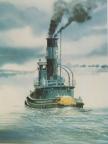ESRC EPSRC - technology enhanced learning
The initiative will be managed within the ESRC's Teaching and Learning Research Programme. In order to maximise the time potential applicants have to consider proposals, the ESRC is 'pre-announcing' the call now.
The ESRC expects to announce the competition on Monday 13th March, when full details and guidance will be provided on the ESRC website. In the interim, a document providing an outline of the likely extent and aims of the call (http://www.esrcsocietytoday.ac.uk/ESRCInfoCentre/Images/forthcoming_tel
_call_tcm6-14127.pdf)
has been produced and a discussion forum has been set up as a resource for potential applicants.







